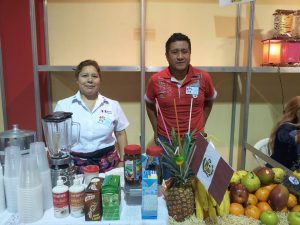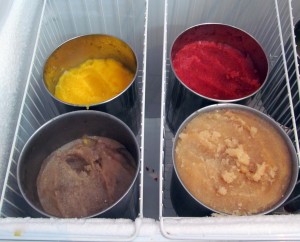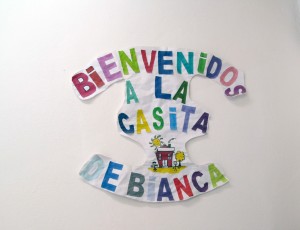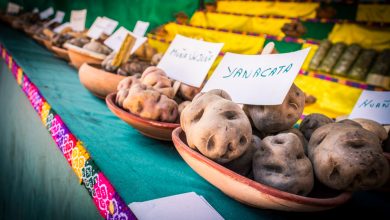Slushes Create a Dream in Buenos Aires

“If you have built castles in the air, your work need not be lost. That is where they should be. Now put the foundations under them..” George Bernard Shaw .
Patricia was born and spent part of her childhood in Coya, in Cusco’s Calca Province. In 1992, when she was 29 years old, she lived in Peru’s capital Lima and an announcement in a newspaper changed her destiny forever. An employment agency sought young women for domestic service, but in Argentina and not Peru.
When you speak with Patricia you perceive a natural dreamer. What is better, she is one of those dreamers whose dreams become reality, little by little, with patience and, even more importantly, will power and hard work. Following the law of full effort and little by little overcoming the stones in the path, dreams can be fulfilled.
That year, 1992, her Aunt Ricardina, the spinal column of her family, almost died from a heart attack when she learned that her niece planned to travel to that country of the Southern Cone. She only knew the location of that place on the map, and from the stories of San Martin, the hero of independence and from news about the Falklands War in which Peru supported Argentina, though distant. There was no family awaiting Patricia in Buenos Aires, only an absolutely unknown world.
It cost Patricia blood, sweat, and tears to convince her Aunt Ricardina, but once she obtained her blessing Patricia began a very long trip by bus. She believed fate was betraying her, taking away almost completely her much dreamed travel. Between Lima, Pucusana, and Ica a confusion of schedules caused her bus to get lost. This took her on a journey worthy of a road movie including a police stop and running from one side of Nazca to another to reach her bus. Nevertheless, her action movie caused her to arrive on time and in good shape in Buenos Aires. Of course nothing is free in life and she had to pay for the kind police officers’ gas which meant her savings were down to five dollars when she reached the Argentine Capital.


Throwing oneself into a city like Buenos Aires, especially when you are a 29 year old girl, is a crusade only worthy of the most valiant of woman. Luckily those were different times and those who had published the announcement in the Peruvian daily are how her friends for life. They form part of the world of affection in Buenos Aires that surrounds her.
Patricia began to work in the home of families with wealth and last names, those of Buenos Aires’ high society. She traveled through the most interesting parts of Argentina and Uruguay in their company as a nanny. She knew how to impose herself on the situation and show that she had guts and capacity when they tried to take advantage of her thinking she was just a naive girl. She had to prove her abilities.
Necessity caused her to develop that which all Peruvians, often without any awareness, carry in their DNA, gastronomy. She learned to take advantage of that time of apprenticeship in the environment in which she worked. She knew how to learn and study English which got her a better job.
In those days, Roberto broke into her life. After a long year of “good morning”, “good afternoon” and “good night” they realized that the destiny that had brought her to Buenos Aires would unite them. That Argentine Peruvian fusion which included ceremonies in the Pilar Church of Buenos Aires and in the Santisima Cruz in the Municipal Park of Barranco in Lima is named Bianca and is 13 years old. Without any doubt Bianca is Argentine. She does not say “tu” but “vos”. Still, that famous Peruvian DNA also runs through her veins since she is showing her skills already in the kitchen.

In 2011 Patricia went to the Casa de la Cultura of Lanus’ Municipality. Located in the southern part of Buenos Aires urban sprawl, it is where a fair of typical Peruvian foods was being organized. It was February and the overwhelming heat of Buenos Aires made her give up the idea of taking food. Furthermore, she thought that the boom in Peruvian food started by chef Gaston Acurio was already running its course in Buenos Aires. As a result she wanted to show Peru’s culinary art but in something else than the standard hot dishes.
The Valentin Alsina Artesan Fair was held that February with signs containing strange names, such as “cremoladas” or “marcianos”. Words like juices and blended drinks were the most familiar for the Argentine public that day. People began to ask what the unfamiliar was about. What they took away was that the drinks used pure fruit pulp without any coloring agents, preservatives, or additives. As a result diabetics and people with celiacs disease could consume them without any worry.
Up until that point the product most like a marciano (Martian) until that moment had been in science fiction films and in a product called Naran Ju, which was an emulation of orange juice. It came frozen in a plastic tube and was filled with preservatives and coloring chemicals. Nevertheless, children loved to suck on that plastic tube of cold juice with a disagreeable flavor. At the fair, the questions turned into tastings and the tastings translated into sales.
From that moment on, Patricia worked to perfect the consistency of a cremolada, a Peruvian slush, until she obtained the kind they regularly provide in Peru. When she visited Peru she was able to obtain implements and machines that helped her make her products properly. She also invented new flavors, such as beet, carrot, banana, and chicha morada. Then she added peanut, pistachio, soy. Nevertheless, she did have to sacrifice some traditional Peruvian flavors since there is no lucuma in Argentina, for example. Her stands in the fairs and festivals are very colorful, worthy of photographs, and attract long lines of people who come to ask questions and then consume.

Patricia is now a student in the University of Lanus where she studies mico-enterprises and takes advantage of the opportunities given for entrepreneurs to develop their ideas and opportunities that other people may not see or value.
Bianca’s House (La Casita de Bianca) is the name of her business in Lanus. It repsonds to the ideals of every Peruvian mother (love for the kitchen and love for her daughter). The people in the neighborhood are making it a part of their everyday language and ways. They are consuming cremoladas, marcianos, and raspadillas (shaved ice) in their daily round. It is becoming a habit. The color and aroma of the fruits saturate her business with the “flavors of the world”. The fusion of flags, the red and white of Peru and the blue dawn of Argentina make the small place transmit joy through it colors, just as any stand of juices and drinks does in any Peruvian market.
Patricia Livano Vargas now accents her verbs on the last syllable in the Argentine way. Sometimes she says “yo”, I, as “io” and sometimes as “zho”. She talks to others with the Argentine pronoun “vos” She loves both her countries and mixes their national anthems into one single song. But above customs and idioms there is something more important. She maintains her dream. As a result, some day the flavor and consistency of the Peruvian cremolada will become popular and natural in Argentina, just because of her work and effort.




